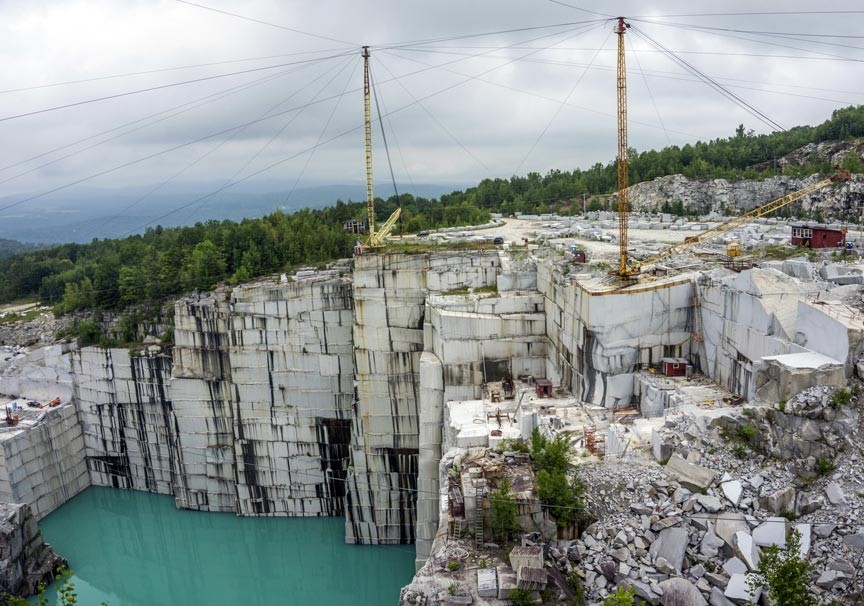Introducing the Mysteries of Granite Quarrying: Where Stamina and Sophistication Meet
The globe of granite quarrying is a world where the raw stamina of nature assembles with human creativity to create structures that stand the examination of time with an air of style. From the depths of quarries to the thorough polishing in workshops, the process of changing granite right into architectural marvels is an intricate dancing of tradition and development. As we peer right into the midsts of this ancient craft, we start to reveal the covert ins and outs that shape the very significance of our built setting.
The Origins of Granite Quarrying
In the record of architectural history, the origins of granite quarrying are shrouded in a tapestry of ancient workmanship and geological marvels. Dating back to ancient Egypt and Mesopotamia, the extraction of granite from quarries marked the beginning of a journey that would at some point result in the production of some of the globe's most iconic structures.
Granite quarrying's roots can be traced to the competent artisans who acknowledged the stone's durability and aesthetic allure. Via a mix of primitive tools and sheer decision, these very early quarry employees uncovered granite blocks that would certainly come to be the building blocks of human beings.
As civilizations progressed, so did the methods of quarrying granite. The Romans, renowned for their design prowess, developed sophisticated techniques for drawing out granite to construct monoliths, holy places, and roadways that stood the examination of time.
The legacy of these old quarrying techniques proceeds to shape modern architecture, with granite remaining a sign of toughness and elegance in building jobs around the world. (granite quarries in south africa)
Devices of the Quarrying Trade
The evolution of granite quarrying strategies from ancient worlds to modern times highlights the critical role played by the tools of the quarrying profession in shaping the market's practices. In old times, quarrying devices were primary, typically containing chisels, hammers, and wedges made from materials like bronze or iron. These tools required significant workforce and time to remove granite blocks from quarries.

Furthermore, the intro of pneumatically-driven tools and high-powered machinery has substantially minimized the physical labor required in quarrying procedures, boosting employee safety and security and productivity. As the quarrying market continues to introduce, the tools of the trade continue to be at the forefront of driving progress and shaping the future of granite extraction.
Extracting Blocks of Granite
Making use of precision equipment and progressed techniques, the removal of granite obstructs from quarries has actually come to be an innovative procedure in the contemporary quarrying market. The initial step entails identifying the place and dimension of the granite deposit to figure out the most reliable extraction approach. When an appropriate site is picked, the removal procedure begins with the drilling of holes for the positioning of dynamites. Managed blasting methods are then employed to disintegrate the granite right into workable areas.

Polishing and Ending Up Strategies
To attain a perfect surface on granite blocks, experienced craftsmens employ a collection of thorough sprucing up and finishing methods. After the initial removal and forming procedures, the granite obstructs undergo a detailed polishing phase to enhance their natural charm and durability. One common method used in polishing granite is diamond abrasion, where commercial rubies are made use of to grind and polish the stone to a smooth finish. This procedure not just develops a glossy surface but also ensures harmony in shade and appearance across the granite block.
Along with polishing, ending up techniques are related to further refine the granite's look. These methods may include flaming, refining, or cleaning, each offering unique appearances and coatings to fit different visual choices. Flaming, for example, includes exposing the granite surface to heats to develop a harsh, distinctive finish, suitable for outdoor applications where slip-resistance is essential. Sharpening, on the various other hand, gives a matte surface that visit the website is smooth to the touch, excellent for indoor kitchen counters and floor covering. By very carefully picking and applying these polishing and completing strategies, craftsmens can transform raw granite obstructs into splendid items that display both toughness and sophistication.

Ecological Influence and Sustainability
With the growing focus on environmental consciousness in the sector, granite quarrying practices are progressively inspected for their influence on all-natural sources and long-term sustainability. Quarrying for granite can have substantial ecological effects. The removal procedure this usually includes using heavy equipment, explosives, and huge quantities of water, leading to environment destruction, soil disintegration, and water air pollution. In addition, the transport of granite from quarries to refining centers creates carbon exhausts, further adding to environmental destruction. granite quarries in south africa.
To mitigate these influences and make sure sustainability in granite quarrying, market stakeholders are adopting different link measures. Carrying out sophisticated modern technologies to lower power usage and water usage, reclaiming quarried land for environmental remediation, and promoting liable sourcing techniques are some strategies being employed. Additionally, accreditations such as the Forest Stewardship Council (FSC) and the Leadership in Power and Environmental Layout (LEED) aid customers recognize environmentally pleasant granite products.
Conclusion
To conclude, granite quarrying is a procedure that needs specialized devices and methods to remove blocks of granite and polish them to a high level of surface. While the ecological impact of quarrying can be significant, efforts are being made to improve sustainability techniques in the sector. On the whole, granite quarrying is a delicate balance between using the stamina and elegance of this all-natural stone while lessening its influence on the setting.